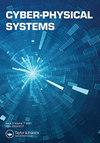Novel Authentication and Secure Trust based RPL Routing in Mobile sink supported Internet of Things
Q2 Engineering
引用次数: 6
Abstract
ABSTRACT In the modern era, prevalence of the Internet of Things (IoT) devices that have de facto protocol as IPv6 routing protocol for low power and lossy networks (RPL). Yet, RPL protocol is vulnerable to many attacks such as rank attack, password spoofing and more. To this end, most of the works have focused their research on securing the RPL-based IoT network. However, still there exist downsides such as high energy consumption, lack of effective authentication and high packet losses. Motivated by these preceding defects, this paper proposes the Novel Authentication and Secure Trust-based RPL Routing in Mobile sink-supported Internet of Things (SecRPL-MS). At first, SecRPL-MS performs a registration process where all IoT nodes in the network register themselves in the security entity. In this work, the frequent death of IoT nodes is alleviated through deploying mobile sink in the network. If any grid member (GM) node wants to transmit their data to the grid head (GH) node, then it must undergo authentication process. Secure routing is adopted in RPL by utilising the sail fish optimisation algorithm. Each GM node encrypts its sensed data using the prince algorithm before transmitting it to the GH node. The moving points are selected for the mobile sink using the Quantum Inspired Neural Network (QINN) algorithm. This proposed SecRPL-MS performance is evaluated using the Network Simulator 3 (NS3) in terms of the Packet Delivery Ratio (%), Delay (ms), Energy Consumption (mJ), Key Generation Time (ms) and Malicious Node Detection Accuracy (%). The proposed SecRPL-Ms outperforms 23% of malicious node detection accuracy when compared to existing systems, which represent the proposed SecRPL-MS system providing high security by mitigating the following attacks such as rank attack, Sybil attack, blackhole attack and man in the middle attack.移动接收器支持的物联网中基于新型认证和安全信任的RPL路由
摘要:在现代,物联网(IoT)设备的普及已经将事实上的协议作为IPv6路由协议用于低功耗和有损网络(RPL)。然而,RPL协议容易受到等级攻击、密码欺骗等攻击。为此,大多数工作都将研究重点放在保护基于rpl的物联网网络上。但也存在能耗高、缺乏有效认证、丢包率高等缺点。针对上述缺陷,本文提出了基于移动接收器支持的物联网中基于认证和安全信任的新型RPL路由(SecRPL-MS)。首先,SecRPL-MS执行注册过程,网络中的所有IoT节点将自己注册到安全实体中。在这项工作中,通过在网络中部署移动sink来缓解物联网节点频繁死亡的问题。如果任何网格成员(GM)节点希望将其数据传输到网格头(GH)节点,则必须经过身份验证过程。利用帆鱼优化算法,在RPL中采用安全路由。每个GM节点在将其感知到的数据传输到GH节点之前,都使用王子算法对其进行加密。利用量子启发神经网络(QINN)算法选择移动sink的移动点。本文利用网络模拟器3 (NS3)对SecRPL-MS的性能进行了评估,包括数据包传送率(%)、延迟(ms)、能耗(mJ)、密钥生成时间(ms)和恶意节点检测准确率(%)。与现有系统相比,本文提出的SecRPL-Ms系统的恶意节点检测准确率提高了23%,这表明本文提出的SecRPL-Ms系统通过减轻rank攻击、Sybil攻击、黑洞攻击和中间人攻击等攻击,提供了较高的安全性。
本文章由计算机程序翻译,如有差异,请以英文原文为准。
求助全文
约1分钟内获得全文
求助全文

 求助内容:
求助内容: 应助结果提醒方式:
应助结果提醒方式:


